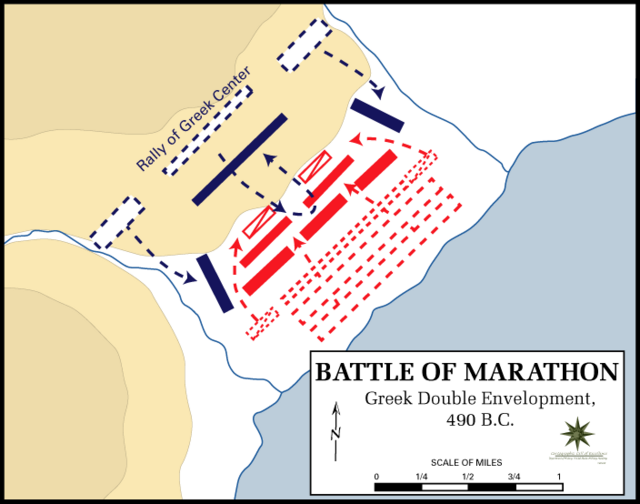Flanking maneuver
military tactic From Wikipedia, the free encyclopedia
Remove ads
In military tactics, a flanking maneuver,also called a flank attack, is an attack on the sides or rear of an opposing force.[a] If a flanking maneuver succeeds, the opposing force is surrounded or has to fight from two or more directions, which reduces the ability of the outflanked force to move or defend itself.


The Battle of Chancellorsville involved Jackson's flanking maneuver against Howard.
Unlike an envelopment, which depends on the enemy's defensive position, obstacles and the terrain, a flanking maneuver uses the enemy's forward movement to create an attackable flank.[3] A psychological advantage may also be present. The confusion and the threat from multiple directions can often cause shock and panic.[4] That may cause soldiers to run from the battle.
A larger-scaled tactical flanking is called a strategic flanking and can have the targets of the flanking be as large as divisions or even entire armies.
Remove ads
Strategy
A flanking maneuver works best when an enemy is engaged at its front. Often, an opposing force must be maneuvered into a position for a flanking attack to work. An ideal situation is getting it into a position in which its front is narrow, and its flanks are long.[5]
A classic example of a flanking maneuver is Confederate General Stonewall Jackson against the Union Army of the Potomac at the Battle of Chancellorsville.[6]
Remove ads
Related pages
- Turning movement
- Ambush
- Envelopment
- Pincer movement (also called a double-envelopment)
- Rearguard
- Attrition warfare
- Feigned retreat
- Preemptive war
- Oblique order
- Shock tactics
Notes
References
Other websites
Wikiwand - on
Seamless Wikipedia browsing. On steroids.
Remove ads
